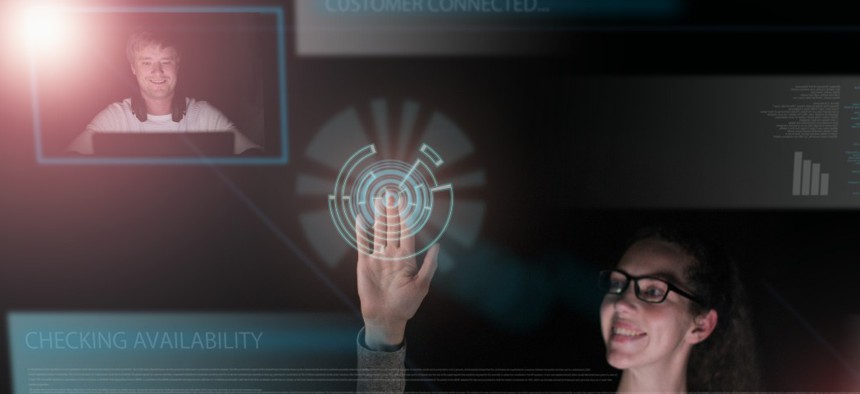Officials Work to Create a More Empathetic Government

Petri Oeschger/Getty Images
Recent customer experience policy changes are ushering in more human-centered agency practices.
For years, the federal government has worked to improve the collective customer experience provided by the agencies and departments that serve millions of Americans each day.
Like a tortoise running a marathon, those efforts have been a slog, but in late 2021, agencies received two performance boosters in the form of a major Office of Management and Budget policy update and an executive order from President Joe Biden.
As federal officials work to implement these policy changes, it’s clear customer experience stewards view them as an inflection point..
“I think it’s an amazing moment in time,” Barbara Morton, deputy veterans experience officer with the Department of Veterans Affairs, said during the Future of Work conference hosted in March by GovExec and Nextgov. “What I see from the experience perspective, and just sort of this movement, is that we’re coming to terms with the fact that a one-size-fits-all of how government operates no longer works the way we need it to.”
VA has transformed its veteran experience over the past half-decade, creating an entire office dedicated to improving its engagement with veterans. The behemoth agency—providing health care to more than 9 million veterans annually—is more nimble than its size might suggest, quadrupling its telehealth capabilities early in the COVID-19 pandemic to continue serving veterans. Morton said the administration’s focus on equity—detailed in OMB’s Circular A-11 guidance for federal agencies—should further hardwire customer experience into agency missions.
“It’s the understanding that we have various needs and different equities that we need to serve,” said Morton, noting that differing populations need to be served “where they are.”
At the Education Department’s Federal Student Aid office, that means meeting students and parents online, often through social media platforms. Federal Student Aid's portfolio includes $1.5 trillion in loans to more than 40 million student aid recipients, and there is no single way to communicate with everyone, according to Wendy Bhagat, Director of Federal Student Aid’s product marketing and delivery group. Through its call centers and on Twitter, Bhagat said Federal Student Aid attempts to show the “human side of us” as opposed to a “cold entity sitting in Washington, D.C.”
“Sometimes,” she said, “they’ll ask us, ‘what did you have for lunch,’ and we actually respond and say, ‘Today I had a turkey sandwich,’ and then it creates this little laugher among people,” she said. “I think it’s very important for these individuals that we’re human and we’re here to help you, and come to us before you go to someone else for guidance on federal aid.”
That kind of rapport matters in major moments. During the COVID-19 pandemic, the administration deferred loan payments for borrowers, and FAFSA leaned on all its channels—social media, texting and emails—to provide its customers and stakeholders with accurate information. The hard work on the back end—journey mapping older and younger borrowers and parents to determine best means of communication, for example—paid off, with major increases in email open rates.
“That’s been wonderful to see,” Bhagat said. “They are looking to us as their trusted source of information.”
The federal government’s tax collectors are looking to improve their customer experience, too. The IRS formally established a Taxpayer Experience Office on March 4, and the office has wasted little time in beginning to deal with challenges, including long wait times.
“The Taxpayer Experience Office is identifying changing taxpayer expectations and industry trends, and focusing on customer service best practices and promoting this consistent voice,” said Annette Jones, assistant to the IRS chief taxpayer experience officer.
Currently in the thick of its busy filing season, the agency aims to deliver faster tax returns to Americans while improving taxpayer compliance.
NEXT STORY: Grading the FITARA scorecard






